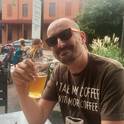Since the original description of Helicosporidium parasiticum in 1921, members of the genusHelicosporidium have been reported to infect a wide variety of invertebrates, but their characterization has remained dependent on occasional reports of infection. Recently, several new Helicosporidium isolates have been successfully maintained in axenic cultures. The ability to produce large quantity of biological material has led to very significant advances in the understanding of Helicosporidium biology and its interactions with insect hosts. In particular, the unique infectious process has been well documented; the highly characteristic cyst and its included filamentous cell have been shown to play a central role during host infection and have been the focus of detailed morphological and developmental studies. In addition, phylogenetic analyses inferred from a multitude of molecular sequences have demonstrated that Helicosporidium are highly specialized non-photosynthetic algae (Chlorophyta: Trebouxiophyceae), and represent the first described entomopathogenic algae. This review provides an overview of (i) the morphology of Helicosporidium cell types, (ii) theHelicosporidium life cycle, including the entire infectious sequence and its impact on insect hosts, (iii) the phylogenetic analyses that have prompted the taxonomic classification ofHelicosporidium as green algae, and (iv) the documented host range for this novel group of entomopathogens.
Available at: http://works.bepress.com/aurelien-tartar/41/
